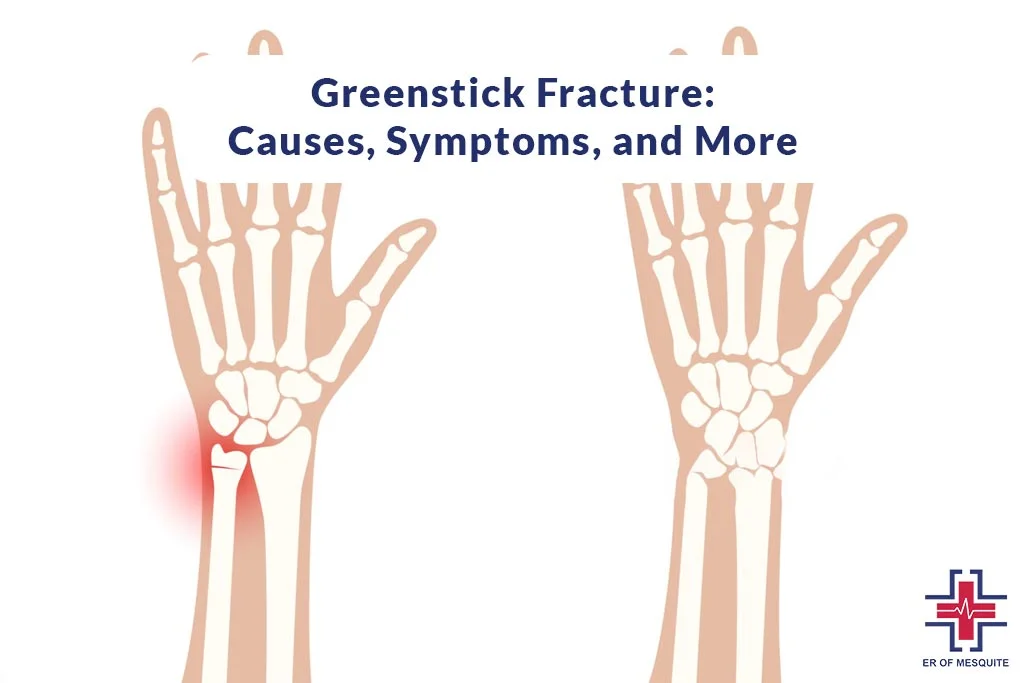Greenstick fractures mostly affect youngsters under the age of ten. The age range of 5 to 14 years old is the most frequently impacted, with a 1 in 100 occurrence. Adults rarely experience it. When a partial thickness fracture occurs, just the cortex and periosteum are impacted on one side of the bone while the other side is unaffected. occurs most frequently in long bones like the humerus, femur, tibia, and radius. After the first two weeks, green stick fractures continue to shift because they are unstable.
There are numerous kinds of fractures, as well as various causes and manifestations. This post will go over the greenstick fracture, including its causes, symptoms, diagnosis, and treatment options.
What is a Greenstick Fracture?
Greenstick Fracture Definition: One kind of bone fracture (broken bone) is a greenstick fracture. When something bends a bone just enough to crack it without shattering it into several pieces, the result is a greenstick fracture.

The word “greenstick fracture” refers to the pattern or shape of the bone break. Imagine the contrast in breaking off a young, green twig as opposed to an older, parched limb. Green twigs bend without breaking, but eventually, the point at which you bend them causes them to shatter or splinter. Older branches break apart easily. Greenstick fractures are a type of break along one side of a bone that does not break into multiple pieces, similar to bending that young twig.
Children under the age of ten are almost exclusively affected by greenstick fractures because their bones are softer and less brittle than those of adults.
If your child sustains a greenstick fracture, they will most likely need to wear a cast while their bone heals. Surgery is necessary to fix more severe fractures, particularly if there are additional injuries present.
Types of Greenstick Fracture
Longer bones, such as yours, are typically affected by greenstick fractures.
- Ulna and radius (forearm bones).
- Calf bone, or fibula.
- Phalanges: bones of the fingers and toes.
- The femur is the bone in the thigh.
Buckle Fracture vs Greenstick
Certainly! Here are the key differences between buckle fractures and greenstick fractures also these same are for torus fracture vs greenstick:
Nature of Fracture:
Buckle Fracture: Incomplete fracture characterized by bending or buckling of the bone without a complete break.
Greenstick Fracture: Incomplete fracture involving a partial break of the bone, where one side breaks while the other remains intact.
Location:
Buckle Fracture: Commonly occurs in the metaphysis, the wider part of the bone near the growth plate.
Greenstick Fracture: This can occur in various parts of the bone.
Visual Appearance on X-ray:
Buckle Fracture: Appears as a bulge or bump on one side of the bone without a complete break.
Greenstick Fracture: Shows a visible partial break on one side, resembling a partially broken twig.
Completeness of Break:
Buckle Fracture: Bone bends or buckles without a complete break.
Greenstick Fracture: Involves a partial break where the cortex (outer layer) breaks on one side, while the inner layer remains intact.
Greenstick Fracture Cause
Greenstick fractures are almost always the result of falls. Greenstick fractures are most frequently seen in the arms, though they can occur in any bone. This is because most people attempt to use their hands and arms to break their falls.
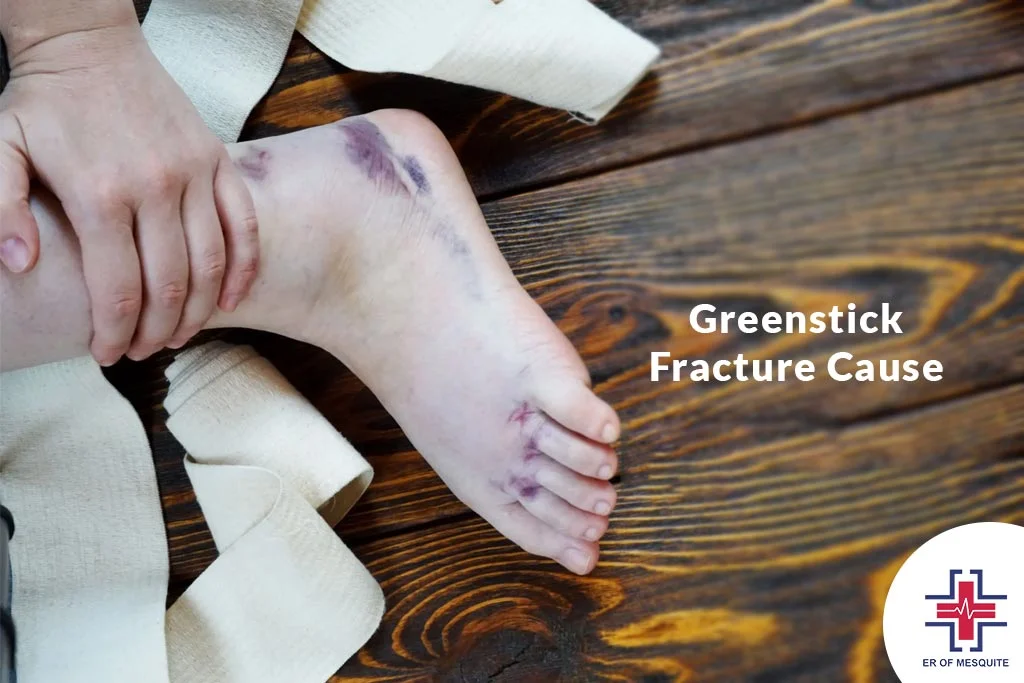
A greenstick fracture in your child can result from anything that exerts significant strain on one of their long bones. The most typical reasons consist of:
- Falling (particularly while using outstretched hands to catch oneself).
- Injuries sustained in sports.
- Vehicle mishaps.
Greenstick Fracture Symptoms
Depending on how severe the fracture is, different greenstick fracture symptoms exist. In cases of milder fractures, you might merely have general soreness or bruising.
In some instances, there may be a visible bending of the limb or a broken area, along with discomfort and swelling.
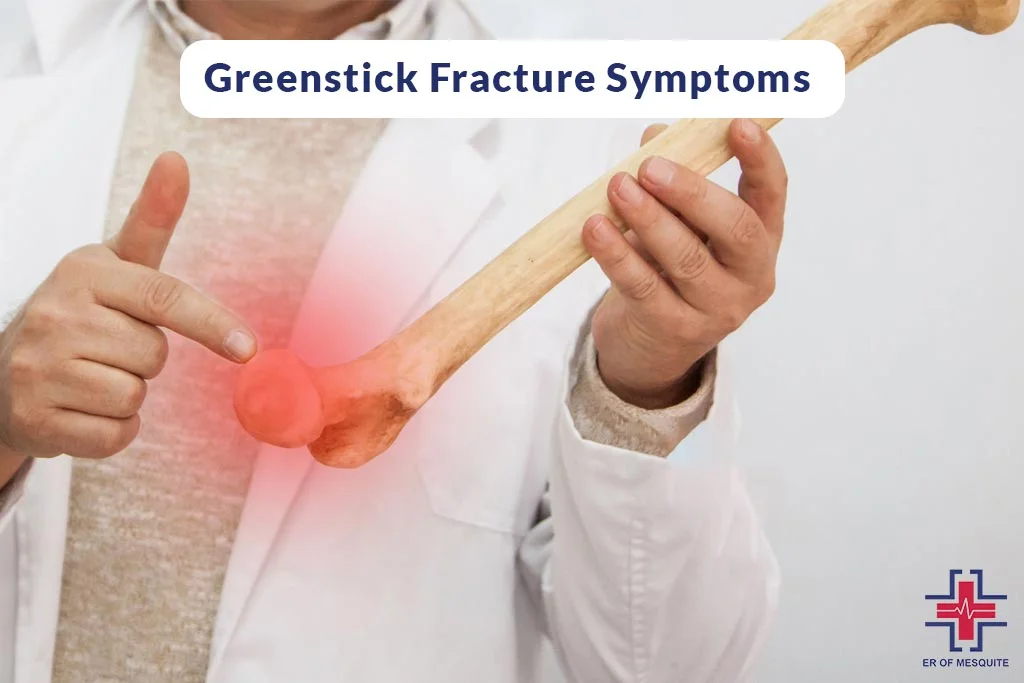
Moreover, the location of the damage affects the symptoms. For instance, you might temporarily be unable to move your finger if you have an injury to it. Alternatively, even though you can still move, a fractured arm could cause you discomfort, edema, and soreness.
What Are The Risk Factors for Greenstick Fractures?
Greenstick fractures can happen to anyone, although they usually always happen to kids under the age of ten. Children’s bones are more prone to greenstick fractures than those of adults because they are still developing and are softer and more malleable.
Greenstick fractures are also more common in young children since they fall more frequently than most people do. Youngsters under the age of ten are particularly prone to catch themselves with their hands, wrists, and arms extended.
Children who are malnourished or have low levels of vitamin D are also at a higher risk of breaking a bone. Greenstick fractures are uncommon in adults but can happen. Adults are far more likely to have several broken bones.
How Are Greenstick Fractures Diagnosed?
See a physician if you’re having any of the following symptoms:
- You have persistent discomfort in a limb that lasts for a day or two.
- Your leg has a noticeable bend in it.
- You cannot bear any weight on your leg.
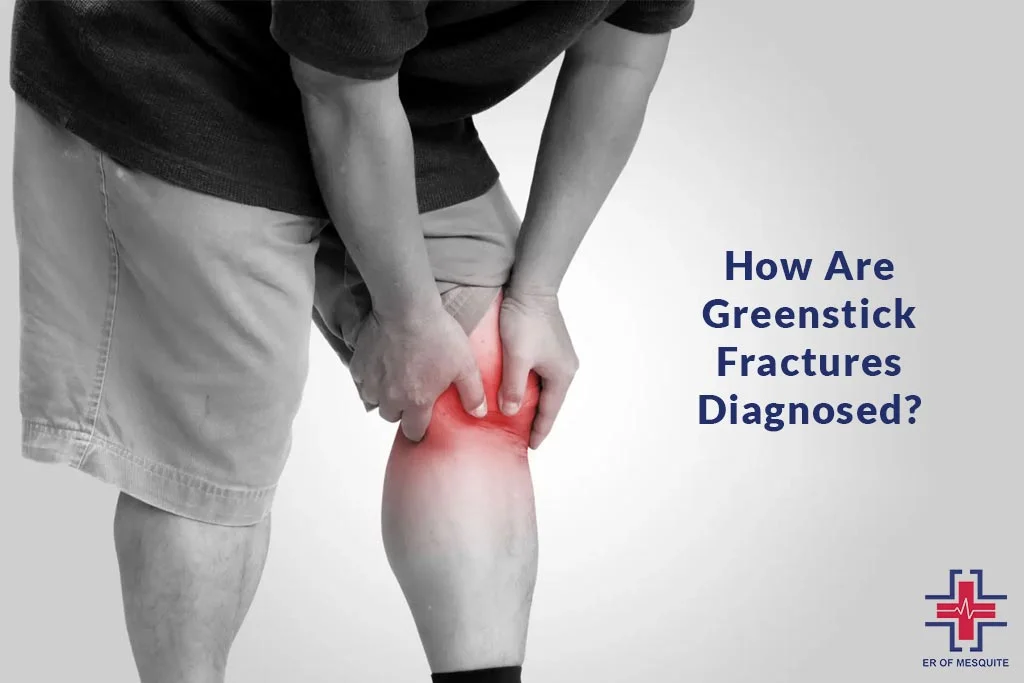
To confirm a greenstick fracture in your child, your provider will utilize X-rays to capture photographs of your child’s bones. To get three-dimensional images of your child’s bones and surrounding tissue, they might also employ computed tomography (CT) or magnetic resonance imaging (MRI) (particularly if they need surgery).
Your doctor will examine you physically during your visit to check for any deformities, edema, pain, or numbness. Your doctor may ask you to twitch your fingers or do other similar procedures to check for the nerve damage that can occasionally accompany bone injuries. They might also examine the joints above and below the damaged location. They can advise getting a greenstick fracture X-ray.
What Are The Treatments for Greenstick Fractures
Your doctor might have to manually straighten the damaged limb if there is a noticeable bend in it. Because this surgery can be rather painful, you can be given sedatives, painkillers, or occasionally general anesthesia.
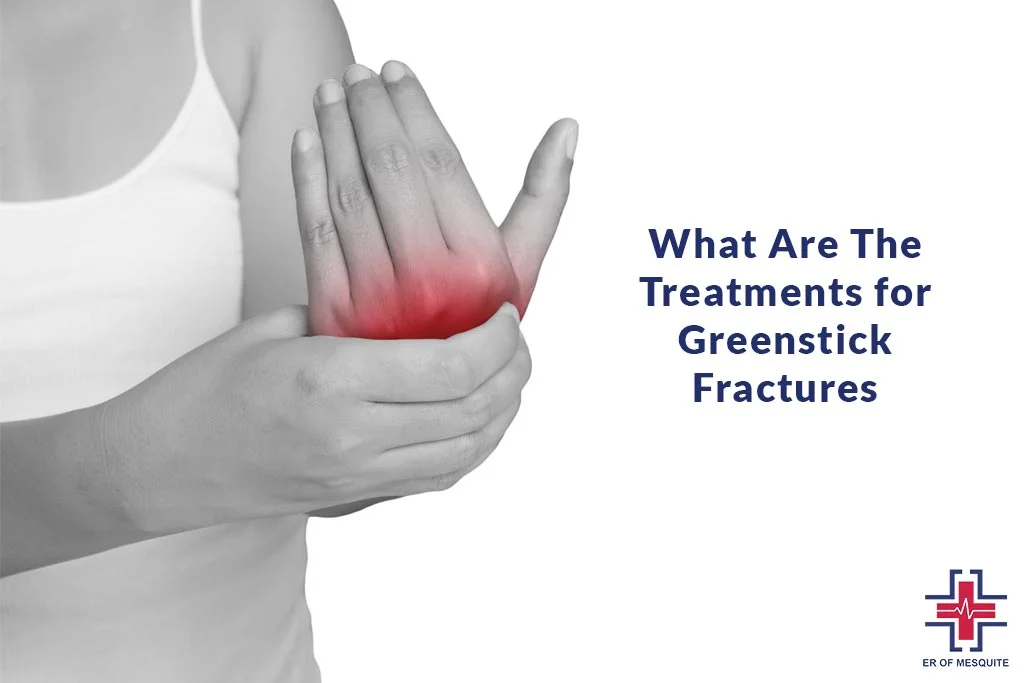
A cast is the best option for greenstick fractures treatment. In addition to helping the bones stay in place during the healing process, this also keeps the previously broken bone from breaking anymore. Greenstick fractures aren’t a complete break, therefore your doctor might determine that the limb can recover enough with a detachable splint. Because you can take the splint off to take a bath, this may be more convenient.
Greenstick Fracture Surgery
Surgery may be required for your child’s bone restoration, particularly if the greenstick fracture has a severe angle (bend).
To allow the bone to heal and regrow together, your child’s surgeon will realign (set) the bone to its proper position and secure it in place. Typically, they carry out an internal fixation, in which your child’s bone is held in place by your surgeon inserting metal pins into it. After their bone has healed, they might require additional surgeries to have the pins removed.
Greenstick Fracture Surgery Complication
The following are the most typical side effects of greenstick fracture surgery:
- Malunion: This is the misalignment of a damaged bone during the healing process.
- Nonunion: The partial or complete regrowth of a bone.
- Acute compartment syndrome (ACS): When blood flow to the muscle is impeded, irreparable injury to the muscles and nerves may result.
FAQs
What Is The Healing Time of Greenstick Fracture?
The healing period for most greenstick fractures is six weeks. The amount of time it will take will depend on which bone in your child is fractured, how severe the fracture is, and whether they have any further injuries. You’ll hear from your provider about what to anticipate and when they’re able to start up again.
What Can I Expect If My Child Has a Greenstick Fracture?
Children who break their forearm bones with a greenstick fracture may be more likely to break the same bone again later in life. This is particularly true if the fracture is not identified and treated by a medical professional promptly. As soon as your child exhibits signs such as discomfort or swelling around a bone, take them to a provider.
Is It a Greenstick Fracture Concave or Convex?
A greenstick fracture happens when the opposing cortex of a bent bone is intact but the cortex on the convex side is broken. On the concave side of a bent bone, a torus fracture happens through the cortex.
What Is The Outlook For a Greenstick Fracture?
A greenstick fracture typically takes four to eight weeks to fully heal. During your follow-up appointment, your doctor can require X-rays to make sure your injury is healing properly.
Takeaway
It’s never easy to know when your child is in agony, especially if they have a fractured bone. It is quite normal to be worried and to have inquiries. The good news is that most children who get a greenstick fracture heal properly and don’t have any problems or long-term repercussions.
Go to the ER of Mesquite for musculoskeletal injuries treatment to discuss your current condition. They will provide you with information on how to keep your child safe as they recover.
